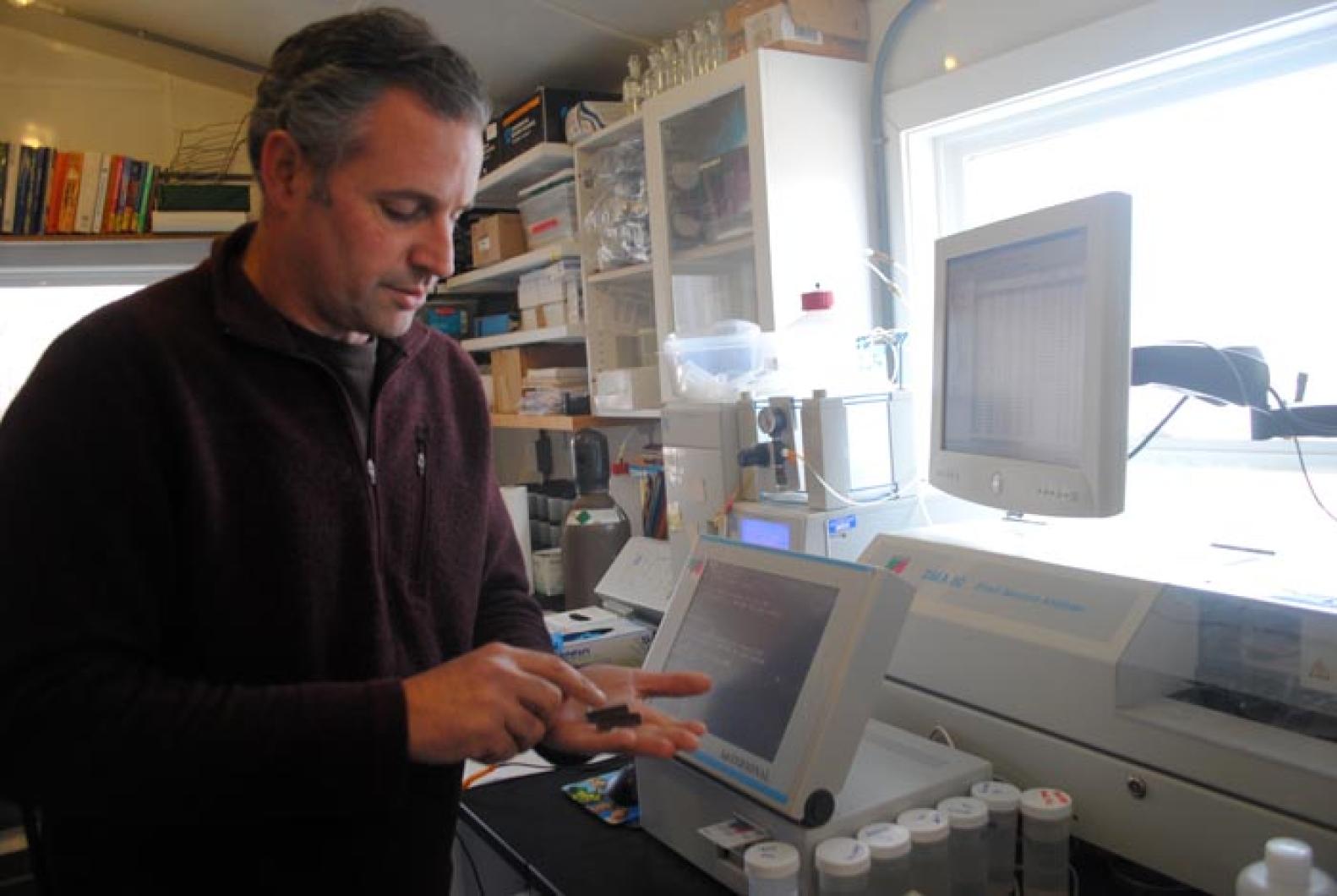While the world trembles with renewed concerns over nuclear power, one government body is pushing to rein in the harmful, and perhaps wider-reaching, effects of more traditional power sources. Although there are no coal-fired power plants on the Vineyard, the Island’s isolation has not immunized it from distant emissions. Last week the Environmental Protection agency announced that it would begin to crack down on such pollutants, chief among them mercury, a familiar, and unwelcome, element in the Vineyard ecosystem. Over the decades it has wafted from the mainland and accumulated in Island fishes and shellfish.
“It’s good to see that we’re going in the right direction. A couple of years ago we weren’t,” Wampanoag Tribe of Gay Head (Aquinnah) natural resources director Bret Stearns said on Thursday. “Any effort at all to reduce atmospheric mercury is important but it’s only one small piece in a very large puzzle.”
Last week the EPA proposed the first-ever national standards for mercury, arsenic and other toxic air pollution from power plants. The new measures, if enacted, would require power plants nationwide to install pollution control technologies such as smokestack scrubbers. Industry groups and some politicians have deemed this economically burdensome.
Coal-fired power plants are responsible for 99 per cent of mercury emissions in the energy sector. Awareness about mercury levels has grown in recent decades as mercury traces in fish have risen. In Aquinnah the issue is especially important. They have been monitoring the substance for a decade.
“Mercury is a huge issue here,” Mr. Stearns said on Thursday. “The EPA says to eat 2.5 grams per person per day but it seems to me the average coastal person and certainly the tribal membership desires to consume far more than that.”
In addition to coal, trash incineration and even crematoriums contribute to atmospheric mercury which then drifts over long distances and is deposited in bodies of water where it accumulates up the food chain. Mercury poisoning affects the nervous system, brain, kidneys, liver and immune system. In a press release published last week the EPA claimed that the new measures would prevent up to 17,000 premature deaths and 11,000 heart attacks per year nationally.
In a small shed just off State Road overlooking Menemsha Pond are four continuously running air filter monitors. The filters, which are synchronized with similar filters all over the country, take readings every three days for four weeks to provide a snapshot of the country’s air quality. Wampanoag laboratory manager Kendra Read collects the filter cartridges every month and sends them to the University of California to be analyzed, where they are then sent off to the EPA. In a building next door, Mr. Stearns displays an array of futuristic lab equipment.
“We’ve been involved with mercury analysis of freshwater and saltwater fish, all sustenance foods that the tribe consumes regularly,” he said. Five years ago the tribe purchased what is called a direct mercury analyzer. Simply insert a small amount of fish flesh in the machine, as Mr. Stearns demonstrates, and it is incinerated and analyzed. The amounts he has analyzed in fish at the Aquinnah lab have tracked closely to those found nationally, where the monitoring of predatory fish like bluefish and tuna, as well as freshwater fish, have revealed elevated mercury levels.
“A lot of people don’t really understand that with freshwater fish here there’s an upper limit of what you can safely eat,” he said.
According to a statewide fish consumption advisory, pregnant women and young children should not eat, in any amount, freshwater fish caught in Massachusetts. Nor should they eat swordfish, shark, king mackerel, tilefish, tuna steak or bluefish in any amount, caught anywhere. Lobster taken from New Bedford harbor or virtually anything from the Boston harbor should also be avoided by those at risk. Everyone else should monitor their intake of predatory fish and are also advised against eating fish caught in New Bedford harbor or lobster tomalley.
In an area as seemingly pristine as Martha’s Vineyard it may seem puzzling how fish in freshwater ponds could be affected.
“It’s not because 700 people broke their thermometers and put them in a local pond, it’s because we’ve had atmospheric deposition and the levels accumulate,” said Mr. Stearns.
The closest coal-fired power plant to Martha’s Vineyard, and the largest fossil fuel burning power plant in New England is Somerset’s Brayton Point Station, which burns roughly 40,000 tons of coal every three days. But the operators of the plant, Dominion Energy, are investing $1.1 billion in environmental improvements, some of which they say will reduce mercury emissions up to 86 per cent by 2015. More than half of coal-fired plants in the United States have taken similar steps to curb harmful emissions but the proposed EPA regulations aim to push that number to 100 per cent.
Still, while emissions in this country may be affected by the proposed regulations, Mr. Stearns says the effort, in order to be successful, has to be worldwide.
“Mercury can go global,” he said. “The reason why we’re involved in worldwide agreements about air pollution is because it’s a worldwide problem. You can create a mercury air emission in Japan and see it here. It can actually go around the world before it gets deposited.”
In Aquinnah where the distant problems of the world-at-large can seem especially abstract, Mr. Stearns is reminded daily by his work that there is no such thing as isolation.
“If you live in New York and you come here you think everything’s perfect,” he said, “And we are very fortunate to live in such a beautiful place, but air data is something that affects us wherever we go. Mercury follows us everywhere.”




Comments (1)
Comments
Comment policy »